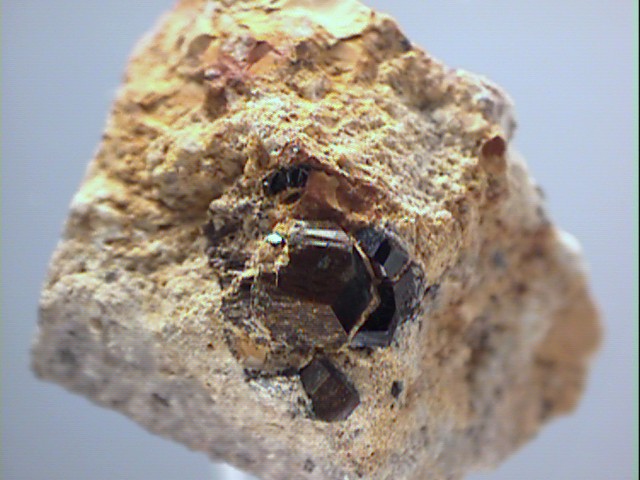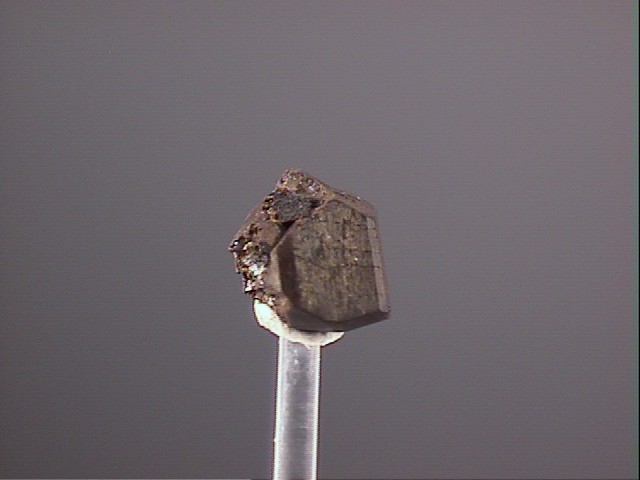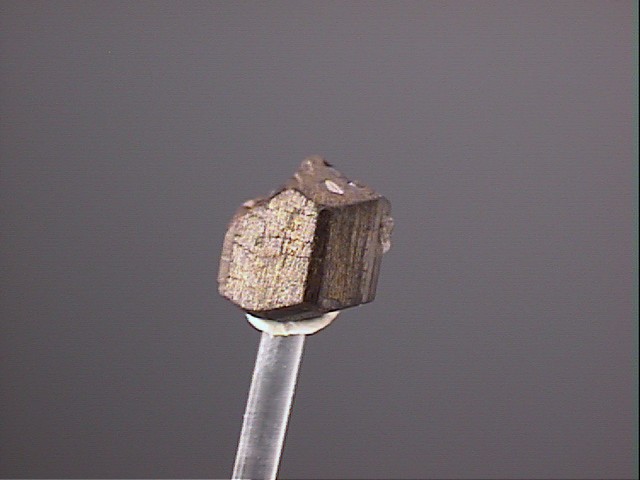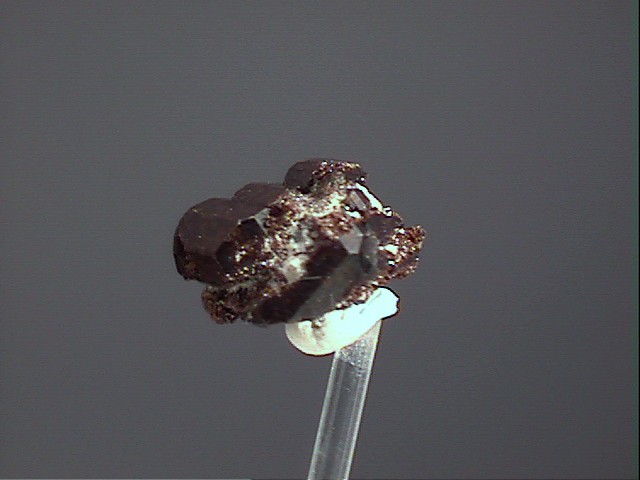
BUERGERITE
Specimen bue-3
$ 35.00
dims mm=8.86x7.98x6.05
wt g=0.6
Mesquitic, San Luis Potosi, Mexico
This is an excellent crystal of buergerite, a brown tourmaline. It has a very appealing surface luster when viewed with a loupe.

 Amethyst Galleries' Mineral Gallery MINERALS |

BUERGERITE specimen bue-4
$ 48.00
$ 48.00
Dims: 0.83x0.78x0.57" (2.10x1.98x1.45cm)
Wt: 0.22oz (6.3g)
Mexquitic, San Luis Potosi, Mexico
Perched on one corner of this host rock are several crystals of buergerite. They are brown and opaque, except for golden highlights that reflect from a bright light. The crystals (while small) are large enough to see the hexagonal structure and lengthwise striations typical of tourmalines (a family in which buegerite belongs). A loupe reveals excellent crystals with golden highlights reflecting from internal fractures, making this prettier than any dravite specimen that I have seen. The largest crystal measures 4 or 5 mm long.


bue-4 ($ 48.00)
Mexquitic, San Luis Potosi, Mexico

BUERGERITE specimen bue-1
$ 45.00
$ 45.00
Dims: 0.30x0.29x0.23" (0.77x0.74x0.58cm)
Wt: 2.5ct (0.5g)
Mesquitic, San Luis, Potosi, Mexico
This is an excellent example of the rare tourmaline, buergerite. It has the typical luster and form of tourmalines, and to my eye the brown color is different than that of dravite. The crystal is nearly opaque - the only hints of translucency comes from the surface texture, which does look translucent to transparent at a barely perceptible level under a 15x loupe. The specimen is nearly doubly terminated and undamaged, except for a missing section near the top where a cavity exposes what I think is the remainder of another buergerite crystal that broke away. There are also a number of prismatic cavities which once held quartz crystals - a few of which remain on the specimen. The back side of the crystal is incomplete, and a loupe shows that it consists of several partial crystals and is likely the attachment point to the original substrate.


bue-1 ($ 45.00)
Mesquitic, San Luis, Potosi, Mexico

BUERGERITE specimen bue-2
$ 35.00
$ 35.00
Dims: 0.41x0.33x0.26" (1.03x0.83x0.66cm)
Wt: 0.03oz (0.8g)
Mesquitic, San Luis Potosi, Mexico
This is a cluster of crystals of the "other" brown tourmaline, buergerite. While it is considered difficult to distinquish from dravite, this specimen looks quite different than most dravites. It has a pattern of gold highlights that give it an interesting surface luster, very nice. Also, several of the crystals are excellent (although all are small), having good form and even being doubly terminated.


bue-2 ($ 35.00)
Mesquitic, San Luis Potosi, Mexico

BUERGERITE specimen bue-3
$ 35.00
$ 35.00
dims mm=8.86x7.98x6.05
wt g=0.6
Mesquitic, San Luis Potosi, Mexico
This is an excellent crystal of buergerite, a brown tourmaline. It has a very appealing surface luster when viewed with a loupe.


bue-3 ($ 35.00)
Mesquitic, San Luis Potosi, Mexico